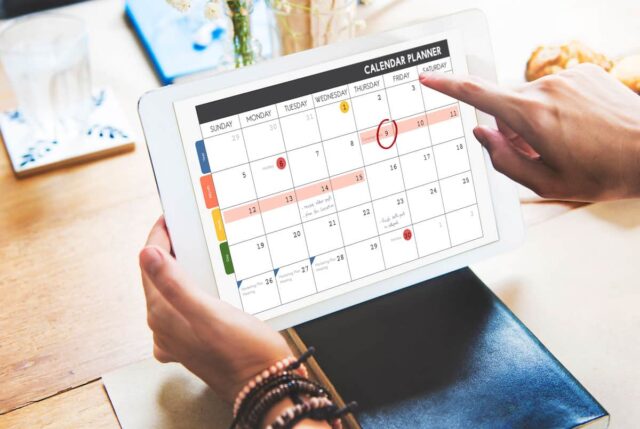A well-organized social media calendar is essential for maintaining consistency in your posting schedule, enhancing your brand’s visibility, and effectively engaging with your audience. A strategic calendar helps you plan, organize, and execute your social media content while ensuring that you align with your marketing goals. Here’s how to build a social media calendar that keeps your content consistent and impactful.

Table of Contents
Toggle1. Define Your Goals and Objectives
Set Clear Goals:
Before creating your calendar, identify your social media marketing goals. Are you aiming to increase brand awareness, drive website traffic, boost engagement, or generate leads? Defining your objectives will guide your content strategy and help you measure success.
2. Choose Your Platforms
Select Relevant Channels:
Not all social media platforms are suitable for every brand. Determine which platforms your target audience uses most frequently (e.g., Facebook, Instagram, Twitter, LinkedIn, TikTok) and focus on those. This allows you to tailor your content to each platform’s unique characteristics and audience preferences.
3. Identify Your Content Themes
Create a Content Strategy:
Outline key themes or topics that align with your brand and resonate with your audience. These themes will guide your content creation and help ensure a diverse mix of posts. Examples of content themes include:
- Product showcases
- Customer testimonials
- Educational posts
- Industry news
- Behind-the-scenes glimpses
- Promotions and events
4. Decide on Posting Frequency
Establish a Schedule:
Determine how often you want to post on each platform. Your posting frequency may vary based on the platform and your audience’s engagement patterns. For example, you might post daily on Instagram but only a few times a week on LinkedIn. Consistency is key, so establish a realistic schedule that you can maintain.
5. Use a Calendar Template
Choose a Format:
Select a calendar format that works for you—this can be a digital tool like Google Calendar, a spreadsheet in Excel or Google Sheets, or a dedicated social media management tool (e.g., Hootsuite, Buffer, Trello). Choose the one that best fits your workflow and allows for easy updates and collaboration.
6. Populate Your Calendar
Plan Content in Advance:
Begin populating your calendar with planned posts for the upcoming weeks or months. Include the following details for each post:
- Date and Time: When the post will go live.
- Platform: Which social media channel it will be posted on.
- Content Type: Specify if it’s a photo, video, article link, poll, etc.
- Caption/Text: Write or outline the post caption.
- Visuals: Include links or notes about any images or graphics needed.
- Hashtags: Plan relevant hashtags to increase visibility.
7. Incorporate Special Dates and Events
Plan Around Key Dates:
Include important dates such as holidays, industry events, product launches, or seasonal promotions in your calendar. This helps you create timely content that aligns with your audience’s interests and current trends.
8. Allow for Flexibility
Stay Adaptable:
While consistency is crucial, it’s also important to remain flexible. Social media trends and current events can change rapidly, so leave room in your calendar for spontaneous posts or adjustments. Regularly review and update your calendar to reflect any new opportunities or shifts in strategy.
9. Monitor and Analyze Performance
Track Your Results:
Regularly review your social media performance to understand what types of content resonate most with your audience. Use analytics tools provided by each platform to track engagement, reach, and conversions. Adjust your content strategy and calendar based on these insights to optimize future posts.
10. Collaborate with Your Team
Encourage Team Input:
If you have a team, encourage collaboration in the content creation process. Use shared calendars or project management tools to streamline communication and allow team members to contribute ideas and content.
Conclusion
Building a social media calendar is a valuable step toward achieving consistent posting and effective engagement with your audience. By defining your goals, selecting relevant platforms, and planning your content strategically, you can create a streamlined process that enhances your social media presence. Stay organized, remain adaptable, and continually analyze your results to refine your approach. With a well-structured social media calendar, you’ll be well-equipped to cultivate a strong online community and achieve your marketing objectives.


No responses yet